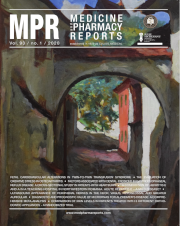The evaluation of oxidative stress in osteoarthritis
DOI:
https://doi.org/10.15386/mpr-1422Keywords:
inflammation, oxidative stress, anti-oxidant enzyme, osteoarthritis, ROSAbstract
Osteoarthritis (OA) is a whole joint disease driven by abnormal biomechanics and attendant cell-derived and tissue-derived factors. The disease is multifactorial and polygenic, and its progression is significantly related to oxidative stress and reactive oxygen species (ROS). Augmented ROS generation can cause the damage of structural biomolecules of the joint and, by acting as intracellular signaling component, ROS are associated with various inflammatory responses. By activating several signaling pathways, ROS have a vital importance in the patho-physiology of OA. This review is focused on the mechanism of ROS which regulate intracellular signaling processes, chondrocyte senescence and apoptosis, extracellular matrix synthesis and degradation, along with synovial inflammation and dysfunction of the subcondral bone, targeting the complex oxidative stress signaling
Downloads
Published
How to Cite
Issue
Section
License
The authors are required to transfer the copyright of the published paper to the journal. This is done by agreeing to sign the Copyright Assignment Form. Whenever the case, authors are also required to send permissions to reproduce material (such as illustrations) from the copyright holder.

The papers published in the journal are licensed under a Creative Commons Attribution-NonCommercial-NoDerivatives 4.0 International License.

